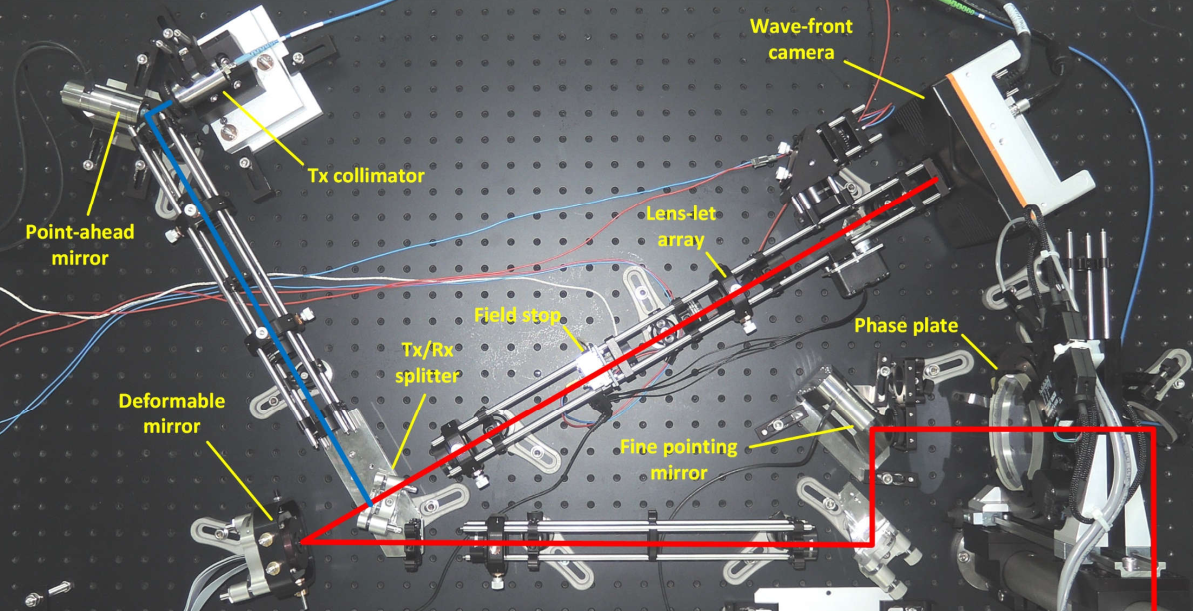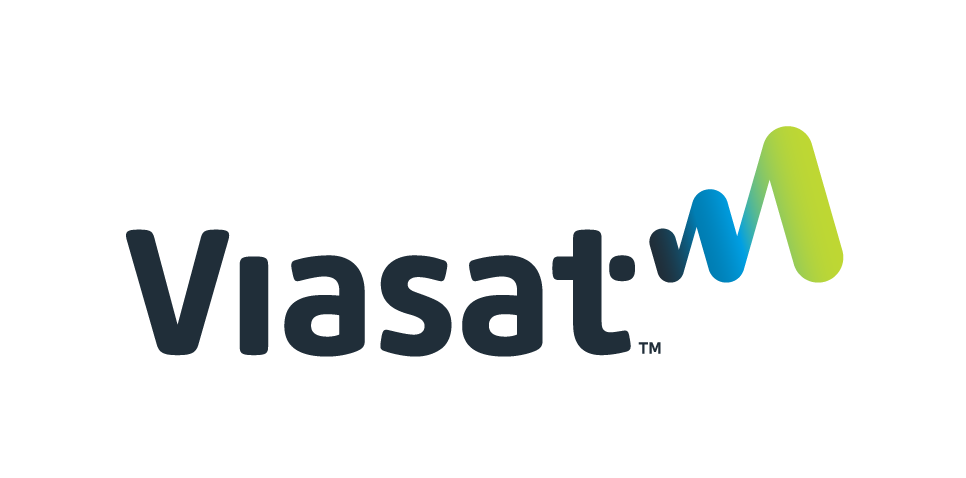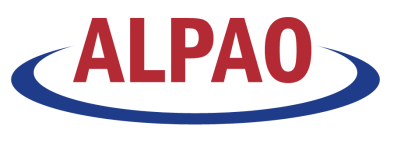-
StatusOngoing
-
Status date2022-11-16
-
Activity Code6A.060
The main objectives of the OGS-OFL activity are
-
• to define a preferred concept of the optical feeder link system that matches the features and needs of optical payloads in GEO HTS
-
• to identify critical optical technologies that require de-risking
-
• to perform selected risk mitigation activities on the constituents of such system with emphasis on the optical ground station and its S/W
The simulation tool provides the following features:
-
Use of published models of atmospheric turbulence strength
-
Supports Downlink calculation: temporal behavior & statistics of irradiance
-
at the OGS entrance pupil
-
and in the OGS focal plane / single-mode receiver
-
-
Supports Uplink calculation: temporal behavior & statistics of irradiance
-
at the target satellite
-
taking into account adaptive pre-compensation & anisoplanatism (point-ahead)
-
-
Allows for sizing of the downlink / uplink aperture
-
Dimensioning of the bi-directional AO system
-
-
Includes effects of wind speed

The Lab Demonstrator provides the following key features:
-
Simulates atmospheric turbulence, using rotating phase screens
-
Validates simulation tool w.r.t. beam propagation effects
-
at the target satellite, taking into account adaptive pre-compensation & anisoplanatism (point-ahead)
-
at the ground receiver
-
-
Can be used as a "plug-in" atmospheric channel simulator
-
investigate & demonstrate end-to-end performance of an optical communications system including atmospheric channel impact
-
transparent to communications system (Tx/Rx fiber interfaces)
This project complements findings of various optical feederlink investigations, such as ESA projects ORELIA and ONUBLA, as well as the BATS project under EU FP7. The challenge is to establish a preferred concept for an optical feeder link system of 1Tbis/s and more:
-
Constitute customer requirements and carry out system analysis
-
Trade-off optical modulation / demodulation schemes, incl. multiplexing / de-multiplexing, optical amplification, and atmospheric turbulence mitigation
-
The high-power handling capability of a large actuator deformable mirror is investigated
-
The activity scope considers an optical bi-directional point-to-point Space-Ground-Links to GEO, while staying compatible to Tbit/s OFL performance requirements
In addition, high-power handling capability of a large actuator deformable mirror is investigated.
The purpose of the proposed activity is to support the development of the Adaptive Optical Ground Station (AOGS) product series of Synopta, both, stationary or transportable, towards application in Optical Feeder Links (OFL). This type of optical ground station is capable of handling multi-100Gbit/s data rates.
The Synopta AOGS product series support high-data-rate laser communication links for
-
Data relay uplink/downlink with GEO satellites
-
High data rate feeder links for GEO satellites
-
Direct-to-Earth links, LEO and GEO
In general, the AOGS is fully transparent to the type of modulation applied. In particular, so-called transparent optical modulation schemes and their corresponding appropriate RF-optical (de-) modulation technologies for Tbit/s feeder links and corresponding high transmit power levels are supported by the Synopta AOGS.
The main features of the Synopta AOGS product series are
-
Dual wavelength capability (1'064 nm, 1'550 nm)
-
Support of bi-directional communication and high-data rate up- and down-links
-
Enables Terabit/s optical feeder links (high-power AO system)
-
Full interoperability with various types of user specific communication systems (coherent or direct detection)
-
Standardized control and communication interfaces
-
High operational autonomy with minimum infrastructure requirements
-
Networking capability to support route diversity concepts
The OGS S/W provides the following features:
-
Semi-automatic system definition
-
Flexibility w.r.t hardware and platforms
-
Acquisition / tracking sensor support Automatic link execution (PAT state machine)
The functional test system to be developed in this project is an End-to-End OFL Lab Demonstrator, comprising
-
Optical transmitter and receiver
-
RF modems for validation of user signals
-
Adaptive Optics
-
Atmospheric Channel Simulator
-
OGS S/W
The work plan is extended to seven milestones (PDR, TRR, ATR, TRR2, CCN01-FR, CCN02-MTR, CCN02-FR) which separate an analytical baseline work from a functional test campaign.
The baseline work (first three parts) concludes with the Acceptance Test Review.
The risk mitigation activities consist of the following four reviews.
-
Requirements and System Analysis (KO to PDR)
-
B/B Manufacturing & Test Preparations (PDR to TRR)
-
Lab Demonstrators, Test Campaign, Appraisal (TRR to ATR)
-
Risk mitigation before feasibility demonstration (ATR to FR)
-
Risk mitigation activity covers OGS S/W (CCN2-KO to CCN02-FR)
The project “Optical Ground Station for Tbit Feeder Links – OGS-OFL” is completed in November 2022.
The main achievements are:
-
Elaboration of an OFL system concept based on the coherent transmission of analogue waveforms, using optical image rejection transmitters, and optical image rejection receivers.
-
Mitigation of technical risks concerning the performance of the novel transmission scheme on the optical channel, the performance of adaptive uplink beam shaping in view of optical turbulence, and the power handling capabilities of key optical components in the ground segment.
-
Development of dedicated S/W improving configurability and maintainability of the final OGS-OFL product. Within this scope, the wavefront sensor processing, system calibration, real-time performance, and closed-loop tip/tilt rejection have been tested.
The OGS-OFL project is followed-up by further development in the context of ARTES Partner programme AIDAN and ARTES ScyLight activity CREOLA.





